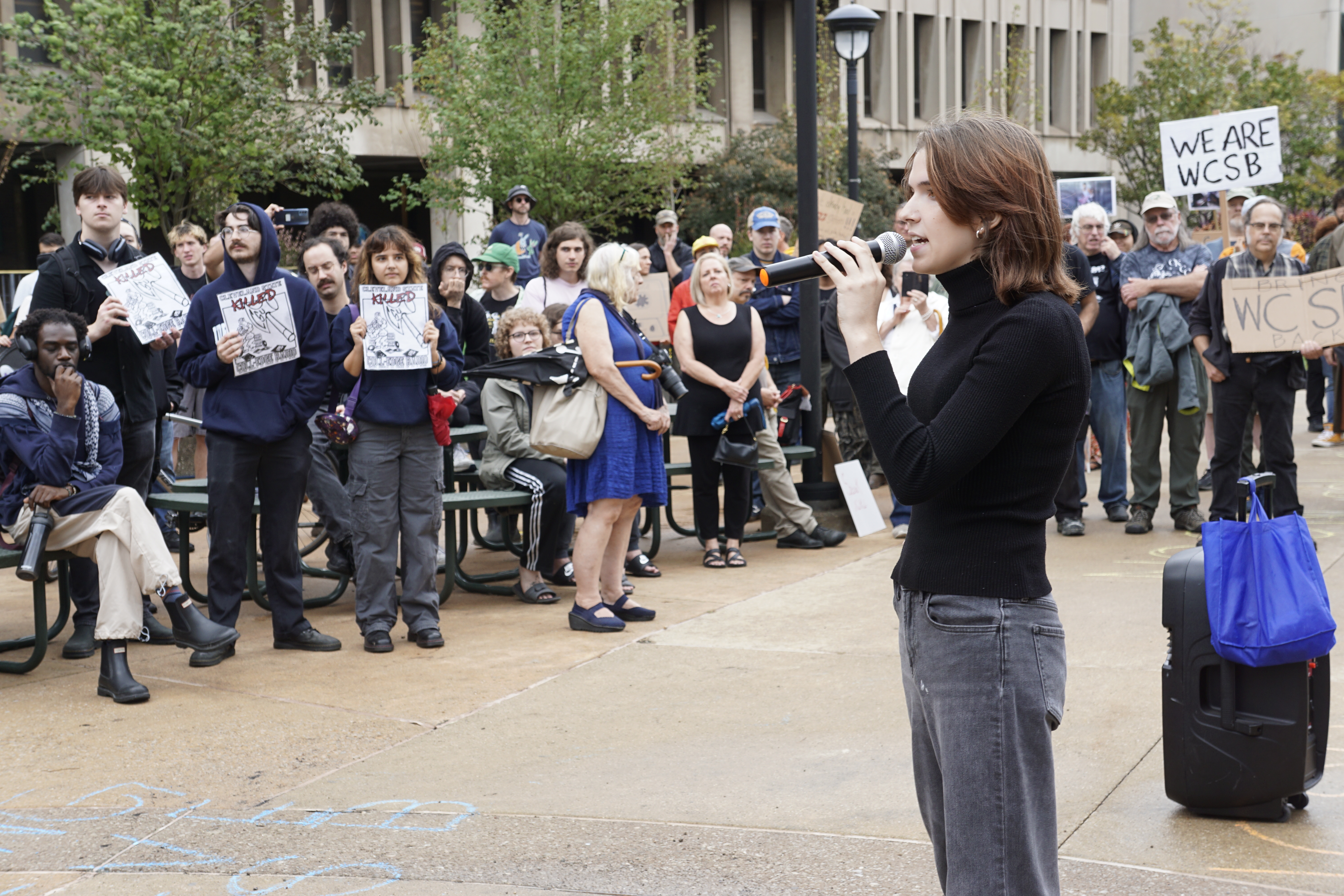The Brownhoist is a Budding Home for Cleveland Creatives
by Annie Nickoloff | Apr. 24, 2024 | 11:36 AM

Annie Nickoloff
Adam Whiting arrives at The Brownhoist on his bike, pulling his helmet away from a head of long curly hair, and steps up the stone building’s creaky front staircase. He navigates the hallways — the many rooms, hallways, performance spaces, lounges and offices — with ease. After one year of giving a few tours of the building, almost every day, he’s got this part down.
And after that year, things are looking pretty different inside the space at 4403 St. Clair Ave.
Old business vaults, now zen massage rooms. Office rooms, now practice and recording studios. A third-floor common area, now an anti-segregationist bookstore. Nondescript basement corners, budding into a speakeasy. One hallway, now a mini-art gallery of forgotten paintings sourced from a closet in the Cleveland School of the Arts.
This late-1800s brick building, with wings constructed in the early 1900s, once the headquarters to a historic Cleveland crane-building factory. Now, it lifts a community of artists in a new home — one that's centered in collaboration.
“I started keeping track of all the wonderful people in Cleveland doing amazing things, and realized that, too often, everybody’s in their own little silo, not connected to people doing similar things, complementary things,” Whiting says. “What would happen if we could gather everyone under one roof to meet each other, share passions, offer complementary skill sets? I think we thrive together, and Cleveland would prosper.”
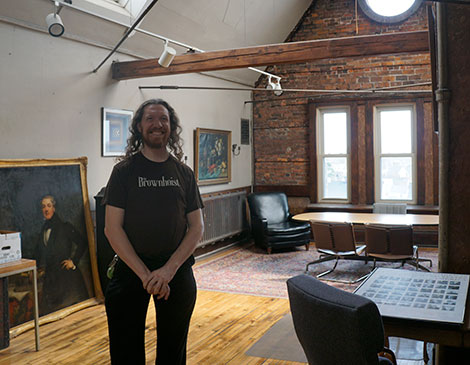
Whiting had been looking for the space for a decade before he stumbled upon a listing for the Brownhoist building. He was drawn to its history, and the surrounding industrial neighborhood in Asiatown, not far from St. Clair Superior. Whiting and his team bought it in 2023; according to Cuyahoga County property records, it sold for $900,000.
History Everywhere
There’s a high regard for the history in this space. You’ll find Ohio’s oldest working, licensed elevator — a manually controlled birdcage in a brick shaft — carefully used to hoist guests up and down the building’s four floors. A decades-old hardwood desk, too large to move, outfits a conference room. Handmade glass doorknobs remain from artists previously working in the building.
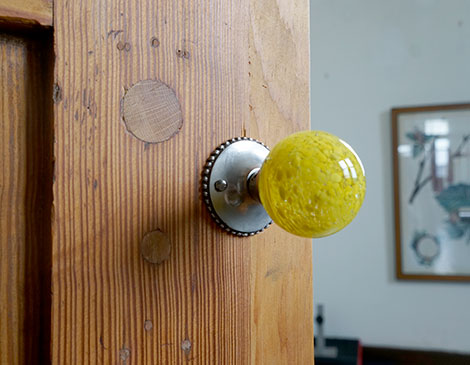
In any room, Whiting easily rattles off a few small ornate or historic details. He even takes some time to share a bit of the building's past, paging through a binder of historic photographs and advertisements to land on a fun fact: in the early 1900s, the main office building in its entirety was physically moved, slowly lifted and rolled, to its current location on St. Clair.
This isn’t a stuffy museum of olden times, though; the building has turned into an active event space, filled to the brim with eccentric and artsy programs that are open to the public. The calendar includes swing dancing lessons, board game nights, storytelling shows and even twerking lessons.
On May 24 and 25, it’ll also include Micro Theater, a two-day event featuring more than a dozen 15-minute or less performances by poets, actors, dancers, comedians and musicians in various rooms. Attendees can explore performances throughout the evening; “Like, every five minutes, a performance is starting somewhere in the building,” says Jon Morgan, one of the event’s co-producers.
Morgan says he was inspired by events in Madrid, Miami and Buenos Aires. The playwright, who moved to Cleveland in June, wanted to create a new collaborative space for artists, especially experimental artists, in Northeast Ohio.
“We thought, ‘How can we bring everybody together under one roof at the same time, make a free event for the community, and inhabit a creative space, and just get surprised by all of the fun, cool, creative performances that are happening around the city,” Morgan says. “The [Brownhoist] is kind of perfect for it, because all of the spaces have a unique personality. The building itself is kind of a cool, artistic experience, just being in it and walking around it. So we thought, ‘Yeah, let’s fill it with performances, and see what happens.'"
Creative Home
Beyond the events, a variety of businesses reside in The Brownhoist. Current tenants include jewelry brand For the Love of Foliage, spoken word artist CocoaWeaponry, filmmaker and photographer Anderson Rush, public speaking coach Green Tongue Academy and The Reading Room CLE. There are also holdover tenants, like Brownhoist Cider Company in the basement, and several lawyers' offices. Several concepts, including a geek-themed speakeasy and a vinyl recording studio, are in the works.
L.S. Quinn, the founder of The Reading Room CLE, also helped establish Friends of the Brownhoist, the building’s membership program that allows community members access to common spaces, lounges and rental spaces for a monthly fee. The program works like an internal fundraiser, Quinn says — and the organization will soon launch its first external fundraising campaign to help make necessary updates to the building, including accessibility improvements, called "The Brownhoist Summer Glow Up." (The fundraiser continues through May 1.)
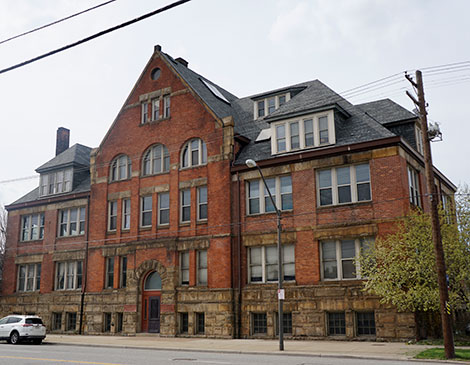
Quinn also helped bring in Story Club, a monthly storytelling show run by Dana Norris, as one of the Brownhoist’s regular events.
And, she moved The Reading Room CLE into the third floor of the building — the first brick-and-mortar location for the concept. Quinn started the bookstore before the pandemic, inspired by a similar nonprofit bookshop concept in Chicago. The Reading Room CLE accepts donated books and resells them, using profits to fund literacy programs in Northeast Ohio.
“I started with two boxes of donated books in the trunk of my car in early spring 2018,” Quinn says, “and then we just sort of continued accumulating books.”
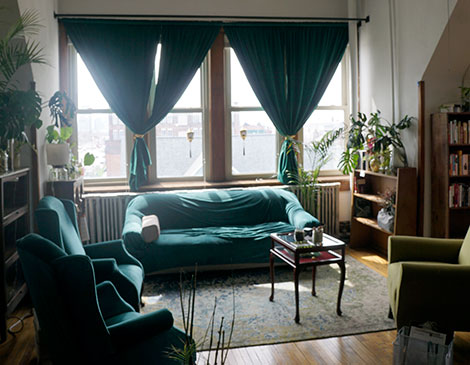
Many, many books — Quinn says she’s working to haul roughly 60,000 books out of her crowded home, where she sacrificed much of her basement and living space to keep the collection throughout the pandemic. Now, they’ll be displayed in The Reading Room CLE’s walls of bookshelves for perusal and self-serve shopping. A couch and a few comfy chairs reside near a sunny window, and a few desks offer co-working space for members and visitors. (The shop will be open to members 24/7, Quinn says, and to the public during The Brownhoist’s open hours, 9 a.m.-4 p.m., Mondays through Fridays.)
The physical shop’s first day of business is Saturday, April 27: Independent Bookstore Day.
The Reading Room's development is one big piece of a puzzle that’s designed to create intersections in Cleveland’s arts, all here in The Brownhoist, Quinn says.
“We have a really fruitful mix of people sharing their knowledge and their experiences and all of their differences to make something good,” Quinn says. “We do actually want people who want to be part of the community. We want people who will be on-site who will talk to their neighbors, who will collaborate, who will come to the monthly potluck.”
Other artistic institutions in Cleveland served as inspirations for The Brownhoist’s new life; Whiting cited Cleveland Public Theatre, Screw Factory, Maelstrom Collaborative Arts, 78th Street Studios and nearby Ingenuity Cleveland as models for The Brownhoist's vision.
“A lot of these spaces are West Side or far West Side," he says. "Not as much on the East Side, and most of the spaces that we do have are very industrial — very raw, very industrial — which is fabulous."
He continues: “Every once in a while, you want a more clean, polished space that feels more warm and lived in, just walking in.” Behind him, sunlight pours through the room’s wooden window frames, glinting off the conference table and hitting the sides of the stone fireplace. “I think that’s what we’ve found here.”
See more photos of The Brownhoist below:
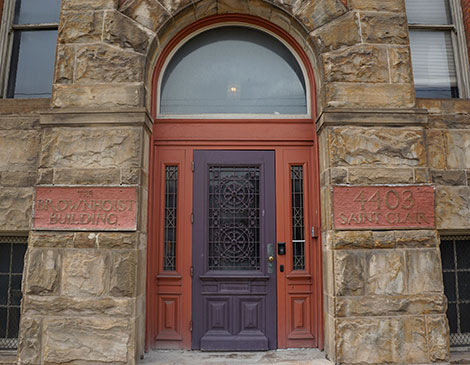
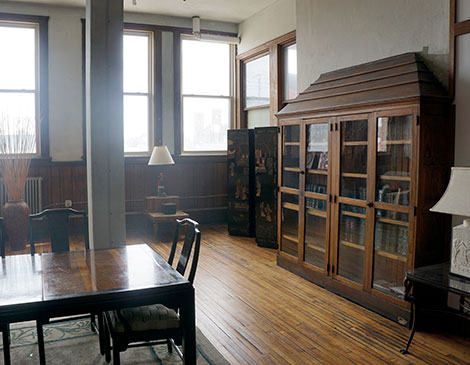
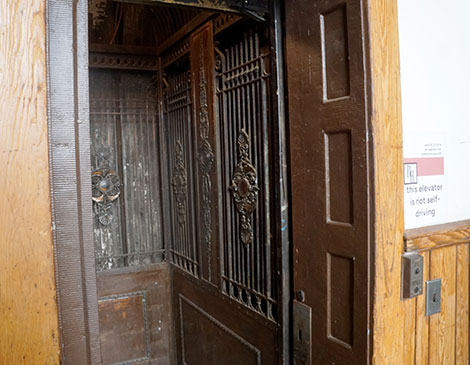
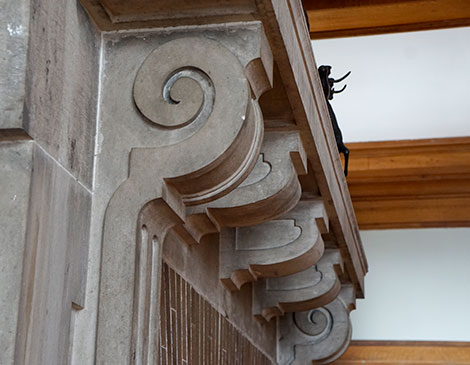
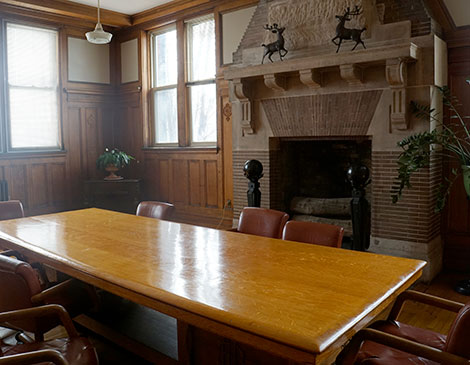
For more updates about Cleveland, sign up for our Cleveland Magazine Daily newsletter, delivered to your inbox six times a week.
Cleveland Magazine is also available in print, publishing 12 times a year with immersive features, helpful guides and beautiful photography and design.
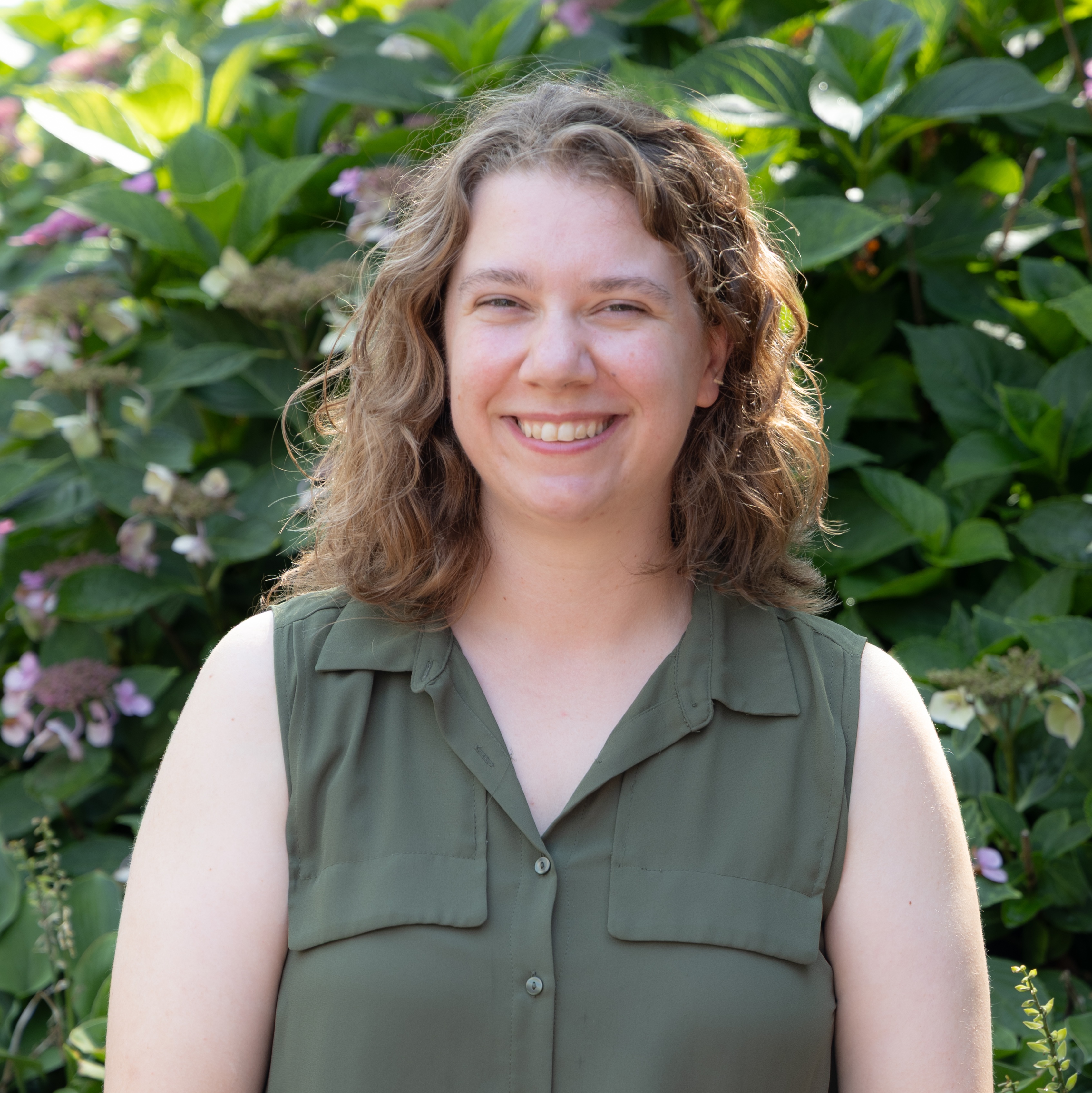
Annie Nickoloff
Annie Nickoloff is the senior editor of Cleveland Magazine. She has written for a variety of publications, including The Plain Dealer, Alternative Press Magazine, Belt Magazine, USA Today and Paste Magazine. She hosts a weekly indie radio show called Sunny Day on WRUW FM 91.1 Cleveland and enjoys frequenting Cleveland's music venues, hiking trails and pinball arcades.
Trending
-
1
-
2
-
3
-
4
-
5









